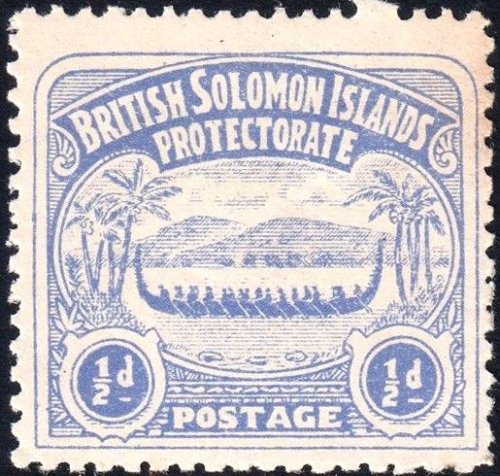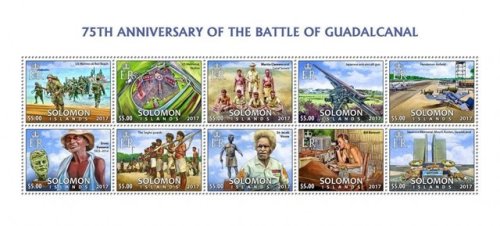The first European to sight and land in Solomon Islands (in 1568) was a Spanish explorer, Álv
The first European to sight and land in Solomon Islands (in 1568) was a Spanish explorer, Álvaro de Mendaña, who evidently rather thought he’d come upon Ophir, the Biblical city of riches of Solomonic fame, quite understandably calling the islands Islas Salomón. The British eventually wrested full control of much of the islands by 1893, though the Germans retained their power in the Northern Solomons (as part of German New Guinea) and a few of the islands ended up as part of Papua New Guinea. The principal island is Guadalcanal - a familiar name to anyone who ever learned much about WWII (and/or JFK). Solomon Islands gained independence from the British in 1978, and although English is the official language, only a tiny percentage of the population speaks English fluently, instead often communicating in an English creole, Pijin, or one of the 70-odd other languages spoken on the islands.Stamp details:Stamp on top:Issued on: February 14, 1907From: Honiara, British Solomon Islands ProtectorateMC #1Second row left:Issued on: April 7, 1975From: Honiara, British Solomon Islands ProtectorateMC #268Second row right:Issued on: November 12, 1975From: Honiara, The Solomon IslandsMC #284Third row:Issued on: July 7, 1978From: Honiara, Solomon IslandsMC #357Stamps on bottom:Issued in: 2017From: Honiara, Solomon IslandsMC #4496-4505 Recognized as a sovereign state by the UN: Yes (since September 19, 1978)Official name: Solomon IslandsMember of the Universal Postal Union: Yes (since May 4, 1984) -- source link
Tumblr Blog : silentambassadors.tumblr.com
#solomon islands#stamps#philately#august 22#guadalcanal



